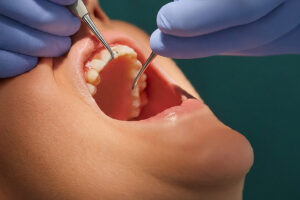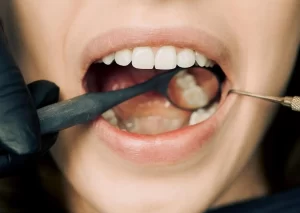How to Vape Without Getting Dry Socket

As a dentist with years of experience under my belt, I’ve seen firsthand the challenges and complications that can arise from dental procedures, such as dry socket, especially among patients who vape.
I understand the appeal of vaping, whether as a form of stress relief or as a step towards quitting smoking. Still, post-dental surgery care is crucial, and vaping can inadvertently complicate the healing process, leading to dry socket — a painful condition where the blood clot at the site of a tooth extraction fails to develop or is dislodged.
In this article, I want to share with you some key insights and advice on how to vape without putting yourself at risk of developing dry socket.
My goal is to help you navigate the recovery period smoothly, combining the pleasure of vaping with the necessity of healing, so that you can maintain your oral health without unnecessary complications.
Can you get dry socket from vaping through your nose
Vaping through your nose theoretically reduces the risk of developing dry socket compared to inhaling through the mouth, especially after tooth extraction.
Dry socket occurs when the suction motion of oral inhalation dislodges the blood clot at the extraction site, an important component of the healing process. Vaping through the nose might avoid this direct suction effect on the clot.
It’s important to note that while this method may lessen the risk of dislodging the clot, it does not eliminate other potential risks associated with vaping, such as irritation from the chemicals in the vapor or the possibility of introducing bacteria to the mouth and extraction site, which can still lead to infection or delayed healing.
While nose vaping might lower the chances of dry socket, approach this method with caution and consider abstaining from vaping altogether during the critical initial healing period after a tooth extraction. Always consult with your dentist or oral surgeon for personalized advice and recommendations for post-operative care.
Read more: How To Smoke After Tooth Extraction Without Getting Dry Socket
How to vape after Tooth Extraction without getting dry socket
I personally don’t recommend smoking or vaping after a tooth extraction, but, if you still have to, here are some guidelines to help you vape safely without risking dry socket:
- Wait before vaping: Ideally, avoid vaping for at least 48-72 hours after your tooth extraction. This period is crucial for clot formation and the initial healing phase.
- Consider nicotine alternatives: If nicotine cravings are strong, consider temporary alternatives like nicotine patches or gum to bypass the oral cavity altogether during the critical initial healing period.
- Gentle technique: If you must vape, do so gently. Avoid creating strong suction, which can dislodge the blood clot. Some suggest inhaling with minimal force and not using a tight seal around the vaping device.
- Nose vaping: While not commonly recommended and might feel unnatural, vaping through your nose minimizes the risk of disrupting the clot at the extraction site. However, be cautious, as this method can irritate the nasal passages.
- Clean mouthguard: If you decide to vape through your mouth, using a clean, damp gauze or a dental mouthguard over the extraction site may help protect the clot. Replace the gauze after each use to maintain cleanliness.
- Stay hydrated and maintain oral hygiene: Keep your mouth hydrated by drinking plenty of water, which helps the healing process. Follow any oral hygiene instructions provided by your dentist, avoiding direct rinsing or brushing of the extraction site in the early days.
- Consult your dentist: Before taking any steps, it’s best to consult with your dentist. They can provide personalized advice based on your specific situation and overall oral health condition.
Vaping after tooth extraction with gauze
It’s best to delay vaping as long as possible following a tooth extraction. For less severe extractions, a 72-hour wait is typically advised for safety. When you resume vaping, placing a piece of gauze over the extraction site can help protect the healing area and the blood clot, particularly when vaping substances that contain nicotine.
This approach helps shield the clot from any potential breakdown caused by vape residue. Enhancing airflow during vaping by gently pulling and avoiding a tight seal around the vape’s tip is important. This technique reduces the negative pressure that could otherwise dislodge the blood clot.
Vaping substances like THC may pose fewer risks compared to nicotine or e-cigarettes, given nicotine’s role in reducing oxygen supply, fostering inflammation, and impairing blood flow to recovering tissues.
If avoiding vaping or nicotine seems challenging within the initial 72-hour window, consider nicotine patches as an alternative to mitigate cravings. Also, discuss the option of having the extraction site stitched with your oral surgeon, as it can secure the blood clot more effectively.
How long to wait to vape after tooth extraction
It’s generally recommended to wait at least 48-72 hours before vaping after a tooth extraction. This waiting period is crucial to allow the blood clot to form and stabilize at the extraction site, a key step in the healing process. Vaping too soon can dislodge the clot, leading to painful complications like dry socket.
For optimal healing and to minimize risks, delaying vaping for as long as possible beyond this period is advisable. Always consult with your dentist for personalized advice based on your specific situation and health condition.
I smoked after tooth extraction
If you’ve smoked after a tooth extraction, watch for any signs of complications, such as increased pain, swelling, or unusual discharge from the extraction site, which could indicate an issue like dry socket.
Here are steps you can take now:
- Maintain oral hygiene: Gently rinse your mouth with warm salt water to help keep the area clean. Avoid vigorous rinsing or spitting to prevent dislodging the clot further.
- Monitor for symptoms: Be vigilant for signs of dry socket or infection, such as bad breath, an unpleasant taste, fever, or increased pain, particularly if it doesn’t improve with pain medication.
- Avoid further smoking: Try to refrain from smoking until the site has healed completely, as smoking can hinder the healing process and increase the risk of complications.
- Seek dental advice: If you notice any signs of infection or if you’re concerned about your healing process, contact your dentist as soon as possible.
- Manage pain: If you experience discomfort, follow your dentist’s recommendations for pain management, which may include over-the-counter pain relievers or prescribed medication.
How does vaping cause dry socket
Vaping can contribute to the development of dry socket after tooth extraction due to several mechanisms:
- Suction force: The act of inhaling or “drawing” on a vape creates a negative pressure inside the mouth. This suction can dislodge the protective blood clot that forms over the extraction site, leaving the underlying bone and nerves exposed to air, food, and bacteria, which can lead to the painful condition known as dry socket.
- Chemical irritants: Vape smoke contains various chemicals and particles that can irritate the wound site. Even though it’s vapor rather than traditional cigarette smoke, the aerosol from vaping can still carry harmful substances that may impede healing and contribute to the development of dry socket.
- Reduced blood flow: Nicotine, a common component in many vaping liquids, is a vasoconstrictor, meaning it narrows blood vessels. This reduction in blood flow can compromise the healing process of your extraction site, making it more susceptible to infections like dry socket.
- Impaired immune response: Beyond its effects on blood flow, nicotine and other substances found in vape smoke can also impair the body’s immune response, reducing its ability to fight off infections at the wound site.
Due to these factors, we, as dental professionals, strongly advise avoiding vaping following a tooth extraction until the site has had sufficient time to heal, typically for at least 48-72 hours, but ideally longer to ensure the risk of complications like dry socket is minimized.
Is vaping OK after tooth extraction?
As a dental expert, I advise against vaping after tooth extraction until the site has fully healed. Vaping can disrupt the formation of the protective blood clot at the extraction site, leading to dry socket, a painful condition. It can also impair healing due to the chemicals in vape smoke. For optimal healing, it’s best to wait at least 48-72 hours before considering vaping again, and longer if possible.
How can I guarantee no dry socket?
It’s impossible to guarantee complete prevention, significantly reducing the risk of dry socket involves following your dentist’s aftercare instructions meticulously. This includes avoiding smoking and vaping, not using straws, maintaining gentle oral hygiene, and avoiding rigorous physical activity for at least the first 24-48 hours. Additionally, keeping the wound clean and eating soft foods can help. Adhering to these guidelines helps ensure the protective blood clot remains intact, promoting proper healing.
Will gauze prevent dry socket while smoking?
While placing gauze over the extraction site when smoking can reduce the risk of dislodging the blood clot, it does not guarantee prevention of dry socket. The act of smoking itself can still introduce harmful chemicals and create suction that might affect the clot. The most effective way to prevent dry socket is to avoid smoking entirely during the initial healing period.
Fact Checked
Our dedicated team rigorously evaluates every article and guide to ensure the information is factual, up-to-date, and free of bias.
Updated Regularly
We update our articles and reviews regularly to ensure you have access to the latest data in the dental industry.
The content on Dental3DU’s blog is intended for educational purposes only. This information should not be relied upon as professional medical counsel. Be sure to always consult with your dentist about the dangers and benefits of any medication, treatment or procedure.







